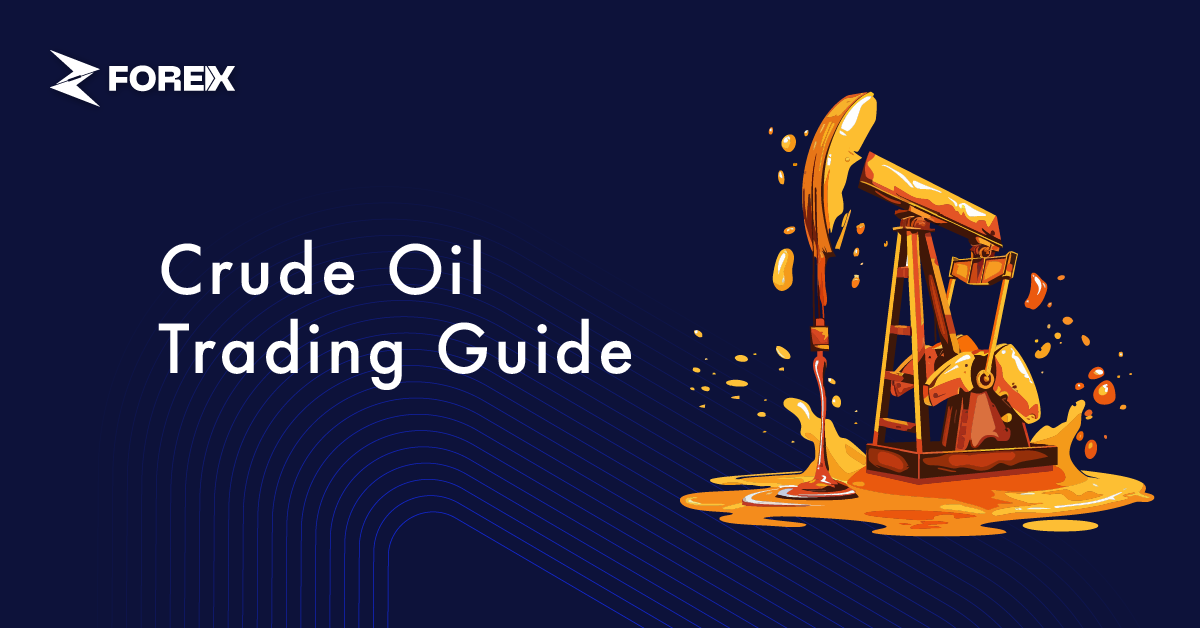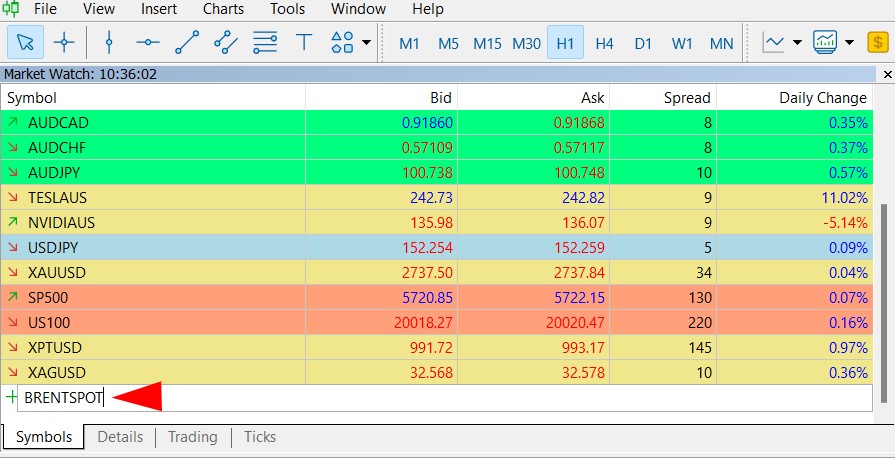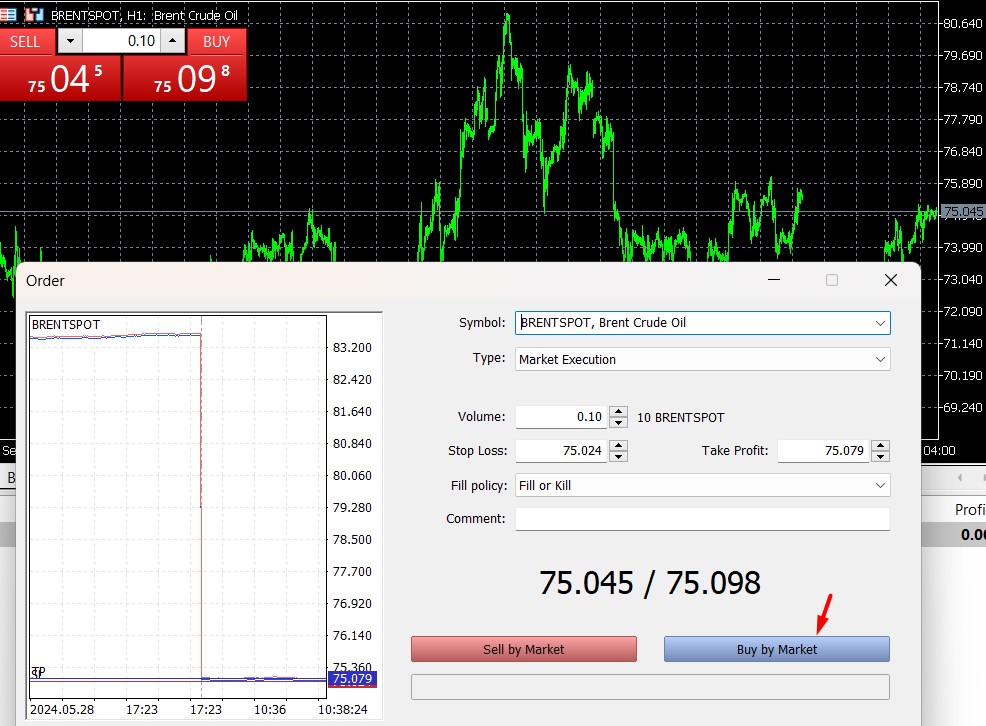
Crude oil trading is an important market for traders aiming to profit from the price movements of this commodity, considered the backbone of the global economy. Today, the heavy reliance of energy, transportation, and industrial sectors on oil means that oil prices are directly influenced by worldwide economic developments.
Due to its high volatility, oil trading offers short-term profit opportunities for traders. Market dynamics can shift rapidly based on the balance of supply and demand, OPEC decisions, political tensions, and events in major producing countries.
Crude oil is a fossil fuel extracted from the earth's crust in its unrefined form. It consists of natural hydrocarbons, organic compounds, and various minerals. Oil is regarded as one of the primary energy sources for the global economy and has diverse industrial applications.
As a primary raw material, crude oil is mostly used in sectors like energy production, transportation, plastics, and the chemical industry. It is refined into products like gasoline, diesel, jet fuel, and various chemicals, enabling the continuation of economic activities worldwide.
Crude oil varies based on its extraction region, density, and sulfur content. Below are the most common types of crude oil:
Crude oil trading is a type of investment in which traders aim to profit from the price movements of this valuable commodity. It takes place through derivative products such as futures, options, CFDs, and ETFs, or through direct buy-sell transactions in spot markets.
Crude oil trading, being a highly volatile market, offers short-term profit opportunities. The key factors affecting oil prices include supply-demand balance, OPEC decisions, geopolitical developments, and economic indicators. Due to its high liquidity and large trading volume, the market is an attractive trading area for many traders worldwide.
Oil trading allows traders to trade directly in the spot market or use various trading instruments, such as futures, options, and exchange-traded funds (ETFs). These different instruments enable investors to apply various strategies, from short-term speculation to long-term investments.
Below, we examine the main instruments commonly used in oil trading in detail:
The spot price is the current market price set for the immediate delivery of crude oil. Traders active on the spot market can buy oil at the current price for physical delivery or take advantage of price movements directly.
This type of trading allows buying and selling based on immediate market conditions, making it appealing for short-term traders. However, spot market prices can quickly fluctuate due to economic and geopolitical events.
Futures contracts give traders the right to buy or sell oil at a predetermined price and date in the future. They are often used for hedging against price volatility or for speculative purposes.
For instance, a trader expecting a rise in oil prices may buy a futures contract to profit from the potential increase. However, futures require the investor to close the position or accept physical delivery upon expiration. As a result, futures trading is primarily used for short- to mid-term strategies.
Options allow traders the right, but not the obligation, to buy or sell oil at a certain price before a specific date.
Call options are preferred by traders expecting a price increase, while put options are suitable for those expecting a price decline.
The primary advantage of options is that investors’ risk is limited to the premium paid for the option. This strategy is ideal for traders seeking to trade with limited risk against price fluctuations.
ETFs and stocks provide an indirect investment route for traders interested in crude oil. ETFs are exchange-traded funds based on production companies' stocks, offering investors a lower-cost entry into the market.
Alternatively, traders can choose to invest directly in the stocks of large oil companies. These types of investments are beneficial for those who want exposure to the sector without directly facing price fluctuations.


To succeed in crude oil trading, it’s essential to analyze market dynamics by applying different strategies. Below are some commonly used strategies by traders:
Trend trading is used in markets where prices move in a specific direction. In this strategy, traders analyze whether the market is in a bullish or bearish trend and open positions accordingly.
For instance, during the COVID-19 pandemic in 2020, global demand declined, leading to a sharp downtrend in oil prices. Traders who identified the downtrend could open short positions, profiting from falling prices.
Arbitrage aims to take advantage of price differences for the same asset across different markets. Traders buy and sell between two markets to benefit from these price disparities. This strategy is particularly popular in futures and spot markets.
For example, a trader tracking crude oil contracts simultaneously listed at different prices in London and New York could buy on the lower-priced market and sell on the higher-priced one.
The day trading strategy involves buying and selling within the same day to capitalize on short-term price fluctuations. Traders aim to profit from rapid price changes.
For example, a trader anticipating a sudden increase in oil prices might buy early in the day and close the position by the end, capitalizing on the volatility caused by OPEC decisions or geopolitical events.
Hedging is a strategy for protecting against potential drops in oil prices. It’s commonly used by producers or companies operating in the oil sector. Hedging can be done through futures or options.
For example, a producer concerned about future price drops can sell oil at current prices via a futures contract, limiting future losses. Traders can also use this strategy.
Traders expecting a drop in oil prices may open a short position to profit from the decline. In short selling, the trader sells at a high price and buys back when prices fall, closing the position at a profit.
As an example, in 2014, rising shale gas production in the U.S. and OPEC's decision against production cuts caused a sharp drop in oil prices. Traders taking short positions benefited from the price decline.
News trading relies on current events and economic developments affecting oil prices. Traders monitor key events closely, aiming to quickly take advantage of price movements when important news breaks.
For instance, after an OPEC meeting, if a decision to cut oil production is announced, prices are likely to rise. Traders can open a buy position to profit from the news’ impact.
Crude oil trading can be conducted 24 hours a day across different exchanges worldwide. However, each exchange has its specific trading hours, and during these hours, market liquidity, trading volume, and volatility can vary.
The trading hours for commonly used exchanges (UTC) are as follows:
What is the difference between Brent oil and WTI oil?
Brent and WTI (West Texas Intermediate) are two types of crude oil sourced from different geographical locations. Brent is extracted from the North Sea and is traded predominantly in the European, Asian, and African markets. WTI, sourced from Texas and nearby regions in the U.S., is primarily used in the American market. While both Brent and WTI are considered "light" and "sweet" crudes due to their low sulfur content, WTI has slightly lower sulfur levels, making it marginally sweeter.
What is the best time to trade crude oil?
The optimal time for crude oil trading is when the market is most active, during the opening hours of the New York and London exchanges. These hours generally span from 12:00 to 20:00 UTC, with higher liquidity and price volatility. This period allows for rapid execution of trades, presenting opportunities for short-term investors.
Is oil traded 24 hours a day?
Yes, crude oil is traded 24 hours a day in global markets. Different exchanges have unique trading hours, allowing for continuous crude oil trading across the globe. However, liquidity and volatility levels vary depending on exchange opening hours.
How is fundamental analysis conducted in crude oil trading?
Fundamental analysis in crude oil trading requires examining supply and demand dynamics, OPEC decisions, geopolitical events, and economic data. For instance, U.S. crude oil stock data, energy demand from countries like China and India, and political events in the Middle East can significantly influence prices. Such analyses provide important insights for forecasting long-term price movements.
Is crude oil trading suitable for beginners?
Yes, but crude oil trading involves high volatility, so caution is advised. Beginners should use low leverage and apply risk management strategies. Learning about both the fundamental and technical factors that impact the market can also help newcomers make more informed decisions.
Which countries play the largest roles in crude oil production?
The largest crude oil-producing countries include Saudi Arabia, Russia, the United States, Iraq, and Canada. These countries play vital roles in global oil supply due to their large reserves and production capacities. Saudi Arabia and Russia, in particular, exert influence on the market by setting production levels in coordination with OPEC and other producer nations.
 How to Use Risk-Reward Tool in cTrader
How to Use Risk-Reward Tool in cTrader
What is the Risk-Reward tool in cTrader and how to use it. Learn with practical examples.
Detail cTrader Invite for IBs: Grow Your Referrals Faster
cTrader Invite for IBs: Grow Your Referrals Faster
Grow your trading network with the cTrader Invite feature. Become a cTrader IB, connect with more traders, and build your referrals easily
Detail QuickTrade in cTrader: How to Place Trades Faster
QuickTrade in cTrader: How to Place Trades Faster
QuickTrade is a built-in cTrader feature that allows you to place trades directly from the chart, without opening the full order ticket.
DetailThen Join Our Telegram Channel and Subscribe Our Trading Signals Newsletter for Free!
Join Us On Telegram!